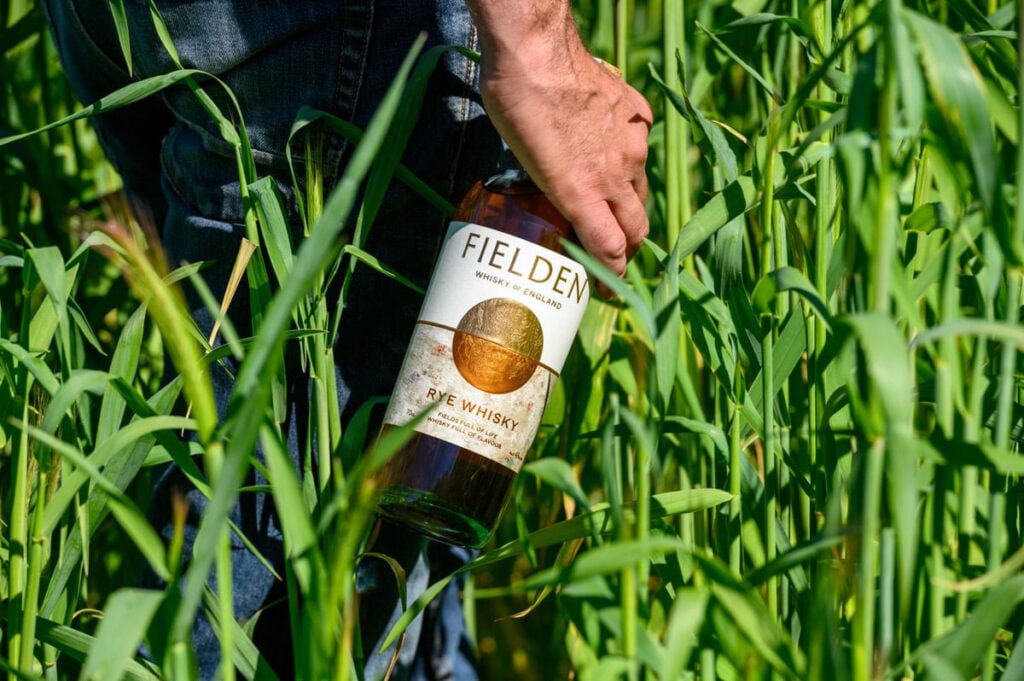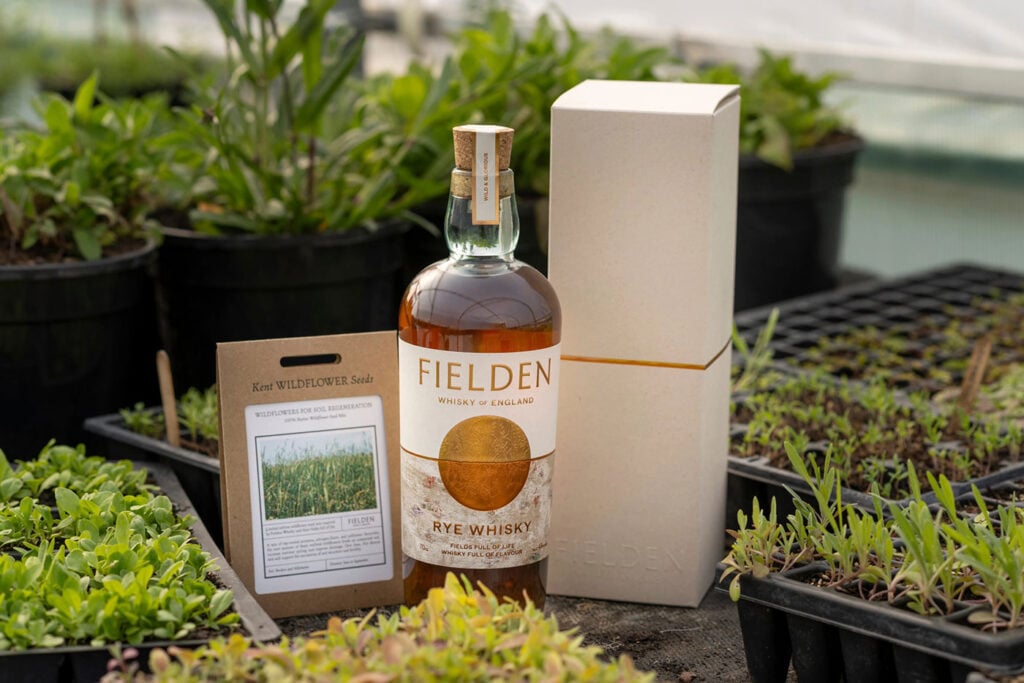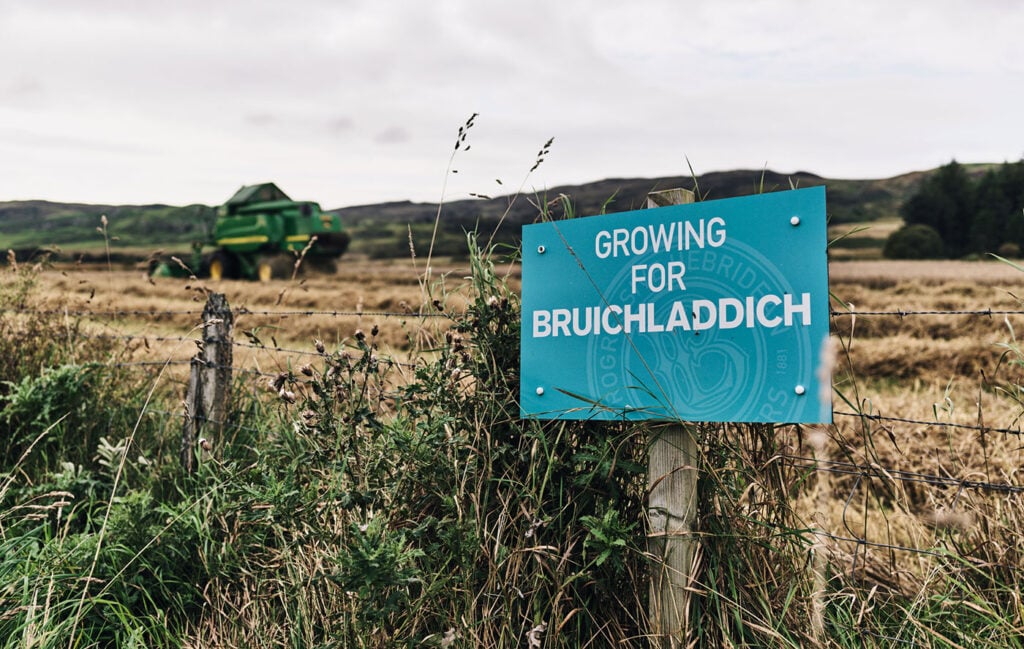Whisky is agriculture.
Behind every dram lies a field, a farmer. A battle with the elements older than any stills.
Whisky makers have long waxed lyrical about provenance and craft. But something deeper is taking root underground.
Regenerative farming. It’s not a new concept. It’s an old-school way of working the land, brought back with radical intent. This return to the old ways represents a new path for some in whisky. Proof, if it were needed, that sometimes, you really do look back to move forward.

All whisky begins as grain.
What is regenerative farming (and why should whisky care)?
Regenerative farming is a system of agriculture focused on healing the land rather than exploiting it. It prioritises soil health, biodiversity, and long-term resilience over short-term yield. Think of it as nature-forward farming that values what’s underground as much as what ends up in your glass.
Instead of chemical fertilisers, it relies on natural cycles. Using cover crops to prevent erosion, rotating grains to restore nutrients, and integrating animals to help fertilise and aerate the soil. Heritage grains play a big role too: deep-rooted, low-input varieties that thrive in real soil, not synthetic ones.
It’s slow. It’s labour-intensive. And it’s about as far from industrial agriculture as whisky can get. It’s process and planet over yield-at-any-cost. It’s not economical, it’s an idealistic approach. But whisky makers embracing this shift are not just chasing flavour, they are backing a model that could change how we understand agricultural responsibility in spirits.

Fielden by name…
Fielden: Rye with a radical agenda
British rye producer Fielden Whisky is one of the most uncompromising voices in this space. The brand is actively reshaping whisky’s relationship with the land, refusing chemicals, and stewarding 1,400 acres through regenerative practices.
“People don’t really know the agricultural processes behind the drinks they’re drinking,” says the Fielden team. “If you don’t know what you’re consuming, it’s hard to care about it.”
Fielden’s motto is clear: no chemicals, no compromise. “We sacrifice nothing. Taking ownership for the way our brand behaves in the field means we are a premium-priced whisky. Consumers can then make a value choice from that.”
Forget the current fetish for terroir. This goes beyond the idea of influence of place; it’s about ensuring that place survives, regenerates, and thrives. Fielden’s land teems with clover, microbial life, and resilient, open-source grains. They collaborate with organic Danish farming networks and actively share their No Chem Regen grain populations to help grow a movement, not just a brand.
“It has to be a collective movement with integrity. The greenwashers and grainwashers have the potential to do a lot of damage. The industry must not let them.”

Say hello to Bruichladdich head distiller Adam Hannett
Bruichladdich: Islay’s agricultural alchemy
Bruichladdich Distillery, always a few steps ahead of the curve, has been pursuing flavour through farming since its resurrection in 2001. Head distiller Adam Hannett says, “Whisky is an agricultural product and relies on healthy soils. The vision set out in 2001 has never wavered.”
One focus has been Bere barley, a six-row ancient grain first planted in Scotland over a thousand years ago. It yields poorly and makes the machinery groan, but the whisky? Bright fruit, dense texture, and full of character.
“We lose an average of 50 to 60 litres of alcohol per ton compared to other conventional strains,” says Hannett. “It’s taken time and patience, but the payoff, in both flavour and environmental impact, is absolutely worth it.”
The distillery is actively mapping soil health using the Genesis platform, monitoring biodiversity, fertility, and climate impact on four farms and its own Shore House Croft. That croft acts as a low-risk R&D site for regenerative methods.
In 2017, farming partner Andrew Jones grew rye for the first time. That crop became The Regeneration Project, the first Islay whisky made with locally grown rye. Rye improved his soil and cut fertiliser use by 30%.
The distillery also partners with Soil Capital, a carbon and soil health programme that supports and rewards farmers for positive changes.

The industry is waking up to what worked before
Diageo and the mainstream shift
Even global players are leaning in. Diageo is piloting regenerative agriculture across twenty farms in Scotland and a network of agave growers in Jalisco. The aim is to decarbonise supply chains for brands like Johnnie Walker, Talisker, and Don Julio.
Partners Agricarbon and James Hutton Ltd are handling the soil health and carbon baseline data.
It is not yet sweeping reform, but it shows the direction of travel. Regeneration is not a niche play. It is entering the mainstream.

Is the new ‘craft’ whisky movement rooted in the soil?
Is this the future of whisky?
Craft, if it ever meant anything, used to be a shorthand for small. No big money backing or large-scale production. Then the ideal evolved to refer to experimental. Evoked by those who spoke of local barley or ferment exploration.
Having no strict definition means craft as a concept moves with what’s trendy. That is increasingly about producing with care. Making every step matter. That’s a concept susceptible to the claws of marketing departments. But where the dial of what’s considered ‘craft’ has moved to reveals something about what matters within the industry. Whether it matters to consumers, of course, is another matter. The word matter has lost all meaning to me now. Matter, matter, matter. Bleh.
Regardless, whisky appears to be backing regenerative farming. Investing in microbial soil life, diverse crops, into long-term resilience. Stewardship over extraction. Flavour is still the goal, but the route involves biodiversity, carbon sequestration, and wildflower margins. Whisky that is made while being part of the solution.
Fielden puts it bluntly: “If whisky truly wants to talk about terroir, complexity, and authenticity, it needs to start in the soil, not just the stillroom.”

Whisky is nothing without agriculture
The Last Drop: Whisky and regenerative farming
Regenerative farming isn’t the biggest story in whisky. But movements like it will form the core of its next chapter if we get it right.
Whisky won’t save the world. But it can’t keep pretending it’s not part of it. The road to delicious and responsible whisky means digging deeper. Flavour matters. So does the field that grew it.
